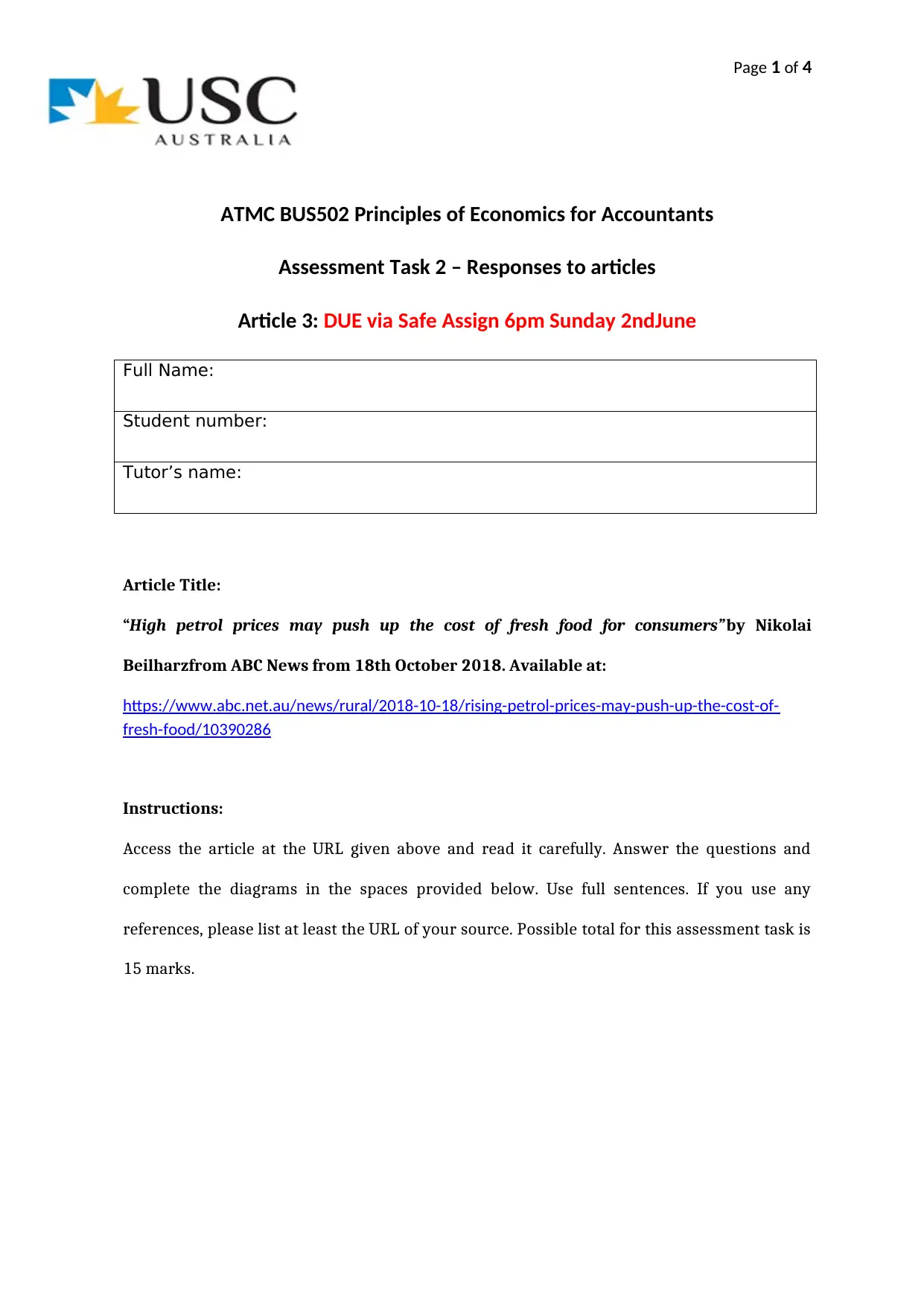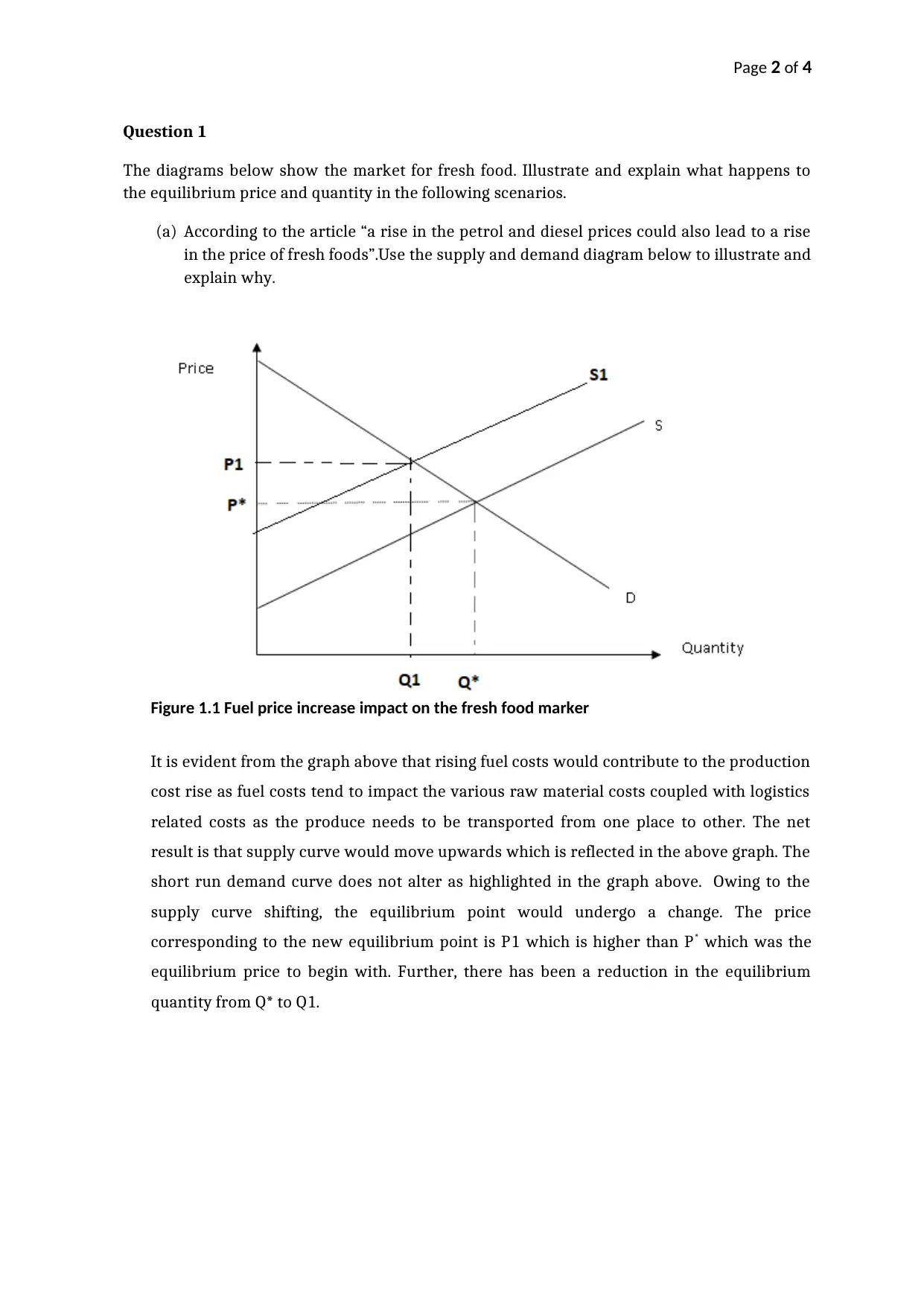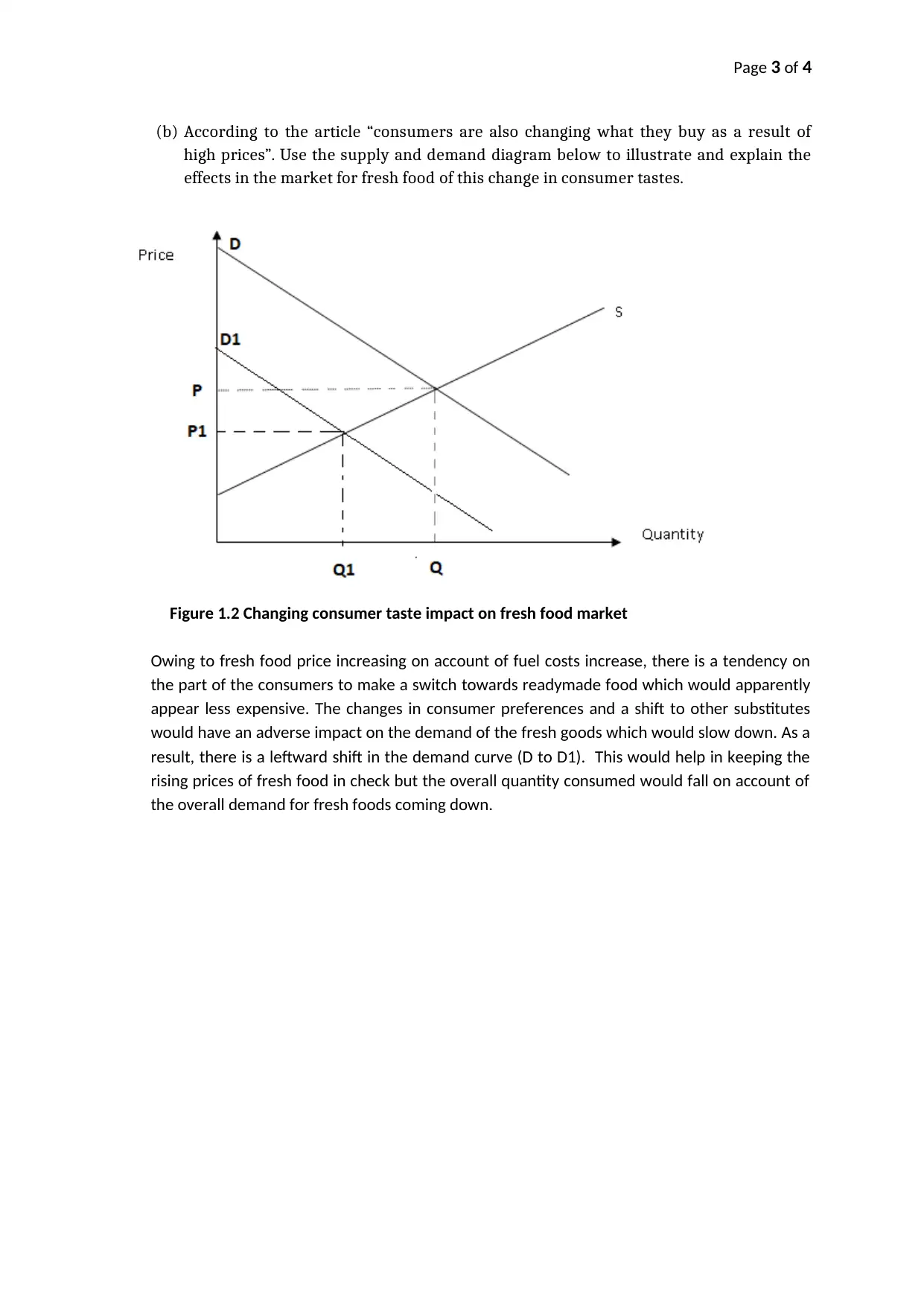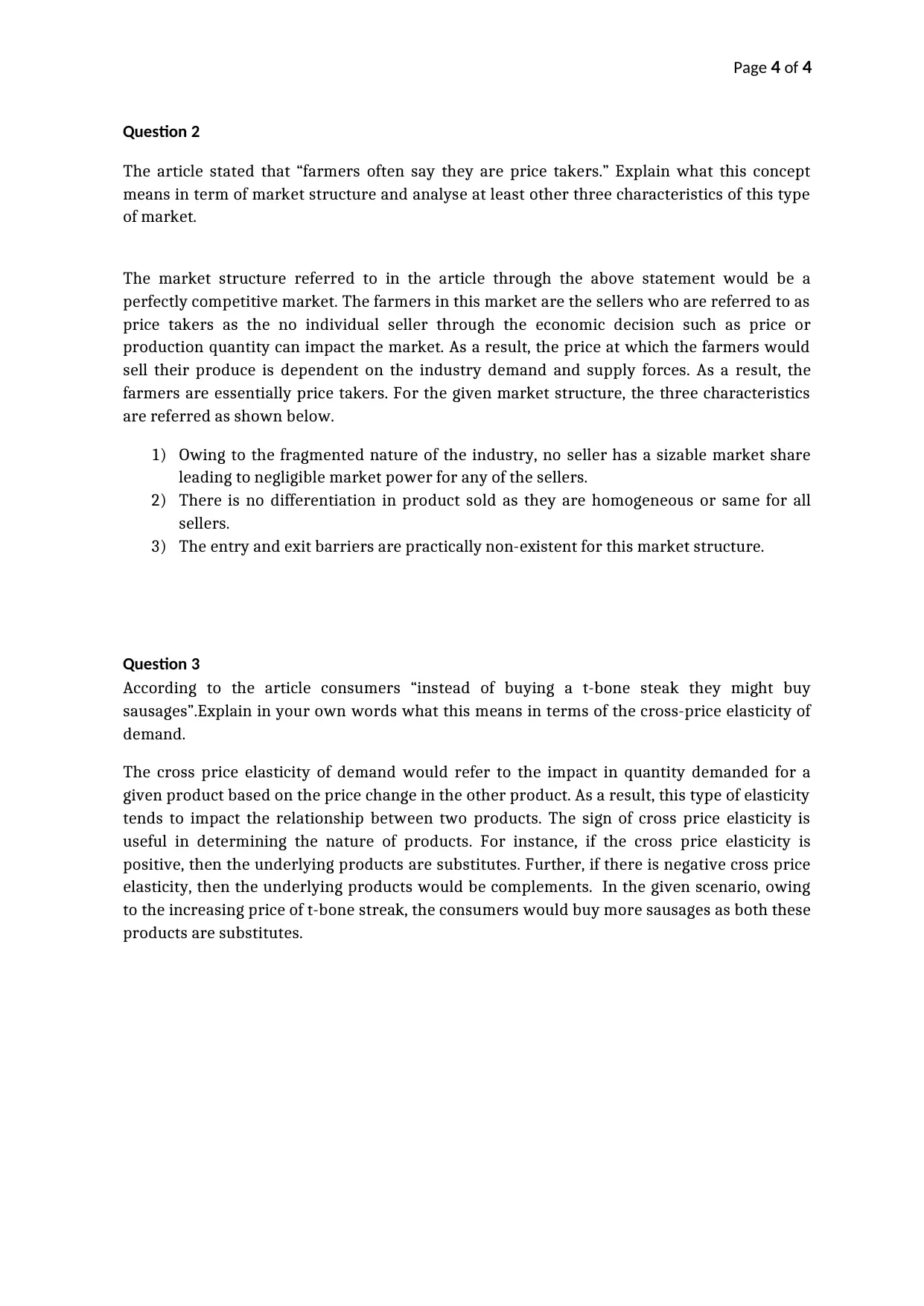ATMC BUS502: Economics Assignment on Fresh Food and Petrol Prices
VerifiedAdded on 2022/12/29
|4
|876
|23
Homework Assignment
AI Summary
This economics assignment analyzes the impact of rising petrol prices on the fresh food market, drawing from an ABC News article. The assignment requires the student to illustrate and explain the effects of fuel price increases and changing consumer tastes on the equilibrium price and quantity of fresh food using supply and demand diagrams. It also explores the concept of "price takers" within a perfectly competitive market structure, detailing its characteristics. Furthermore, the assignment examines the cross-price elasticity of demand, explaining how changes in the price of petrol and subsequent impacts on fresh food prices affect consumer choices, such as the substitution of t-bone steak for sausages. The student provides detailed explanations and diagrams to support their analysis, demonstrating an understanding of economic principles and their application to real-world scenarios.
1 out of 4











![[object Object]](/_next/static/media/star-bottom.7253800d.svg)